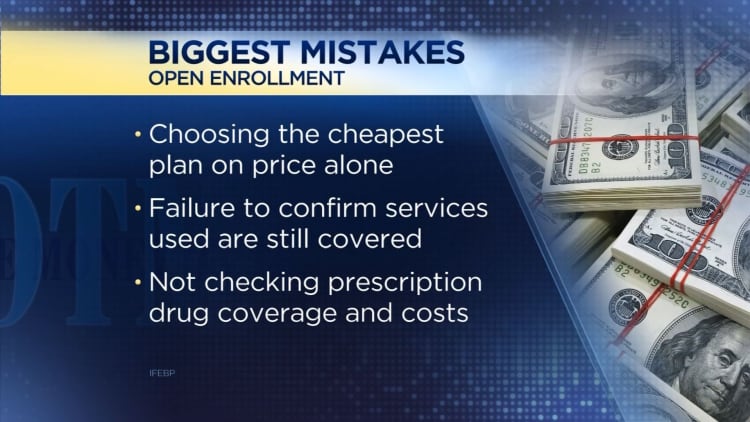
(Update: Since publication of this story, House Republicans released their first amendment to the tax bill. In that amendment, they preserved the $5,000 per year exclusion for dependent care flexible spending accounts.)
Employees in the middle of open enrollment may want to keep an eye on proposed tax reforms.
Dependent care spending accounts are one of many tax breaks that could be eliminated in the House Republicans Tax Cuts and Jobs Act. Under the proposal, those funds would count as taxable income.
(Dependent care accounts aren't the only work-related perk targeted in the bill. Among other changes, the proposal would count as income any employer-provided tuition assistance or adoption assistance. Under current rules, taxpayers can receive up to $5,250 per year in tuition assistance tax-free, and up to $13,570 in adoption assistance per child.)
"This is a proposal, and there's quite a few more steps and evolutions this can go through. We would encourage employees not to panic.Nicole WruckAlight Solutions
Current rules allow families to put aside up to $5,000 in pre-tax dollars ($2,500 if you're married and filing separately) in a dependent care Flexible Spending Account to help cover expenses for qualifying dependents — who could include a child under age 13, or a spouse or elderly parent physically or mentally unable to care for him or herself, among others. A family in the 25 percent tax bracket putting aside the full $5,000 saves $1,250 per year in federal taxes by using such an account.
"What we know is, parents are spending a pretty big chunk of their incomes each year on childcare," said Michelle McCready, chief of policy and research for Child Care Aware of America, an advocacy group.
More than 11 million children younger than age five are in some form of home- or center-based child care, the group estimates. Depending on where you live, the average annual cost can run to five figures, and rival that of public college tuition.
About nine in 10 employers offer dependent care FSAs, according to benefits administrator Alight Solutions. (It ran numbers based on its portfolio of 250 mid-size and large employers.) About 3 percent of eligible employees use them, with average annual contributions of $3,500, said Nicole Wruck, Alight's national health practice leader. (Midway through open enrollment this year, use is up slightly at 4 percent of eligible employees.)
"Those that contribute tend to contribute year over year over year," she said. "When we think about it, it's going to hit the bottom line for those employees."
Families' loss may be bigger than the tax break. Some employers offer matching funds or other contributions to employees participating in dependent care FSAs, McCready said. Without the tax benefit, companies would need to amend or discontinue those perks, she said.
FSA accountholders decide during open enrollment how much to set aside for the following year. Typically, you can't change that amount unless your plan allows for that after a "qualifying event" such as the birth of a child.
Families' best bet right now is to stay the course on their open enrollment choices, said Wruck. If you have already enrolled in a dependent-care account, or planned to, maintain that election.
"This is a proposal, and there's quite a few more steps and evolutions this can go through," she said. "We would encourage employees not to panic."
Families might also look to see what other options are open to them, from employer discounts at care centers to help from family. Child Care Aware offers resources for families looking for affordable care in their area, or programs that provide financial assistance for care.
Parents may also be able to take advantage of the Child and Dependent Care Credit. Depending on other elements of your tax situation, that break could be worth up to $1,050 of your expenses for one child under 13, or $2,100 for two or more children under 13. (Expenses paid with pretax FSA funds don't count toward the tally of eligible expenses.)






